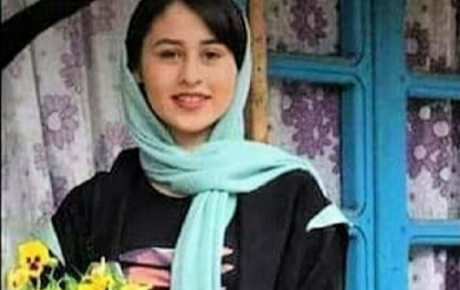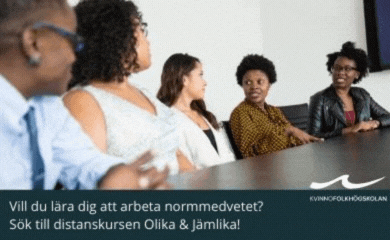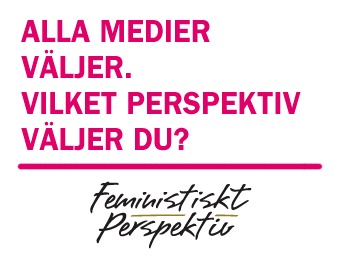
Romina Ashrafi, 14 år, mördades av egen far.
Bild: Privat
New alternative masculinities among Iranian young men
2022-05-30 | Zahra Bagherishad

INTERNATIONAL
Romina, a 14 years old girl, was murdered in 2020 by her father in an honour killing act in Iran. News of Romina`s murder spread across the country and in the diaspora. The following public debate on the issue of honour killings and women's lives gained attention. The brutal murder of a little girl shocked the Iranian and shed light on four other similar killings in the name of honour/namus committed within a month of Romina’s murder. Zahra Bagherishad discusses the impact of intensive debates on social media on the issue of honour/namus among Iranians of different generations and backgrounds.
On 21st May 2020, Romina, a 14-years-old girl, was murdered by the hands of her father, Reza, in northern Iran in an honour killing act. She was in love with her boyfriend and planning to marry him. Romina’s family was opposed to her decision, and they tried to dissuade her by threatening both Romina and her boyfriend. After a long period of conflict, the girl had run away from home with her boyfriend to get married. Her father found out about it and asked her to return home to allow them to get married, he also promised not to harm his daughter; despite which a few nights later he killed Romina in her sleep. The media coverage of this honour killing was very extensive in Persian language media both abroad and in Iran. The public debate about the culture of honour and women's lives has gained attention, and news of the murder spread across the country. Romina's mother demands the highest punishment for her husband. She and other women in the family spoke to the media and revealed details that led to the brutal murder of the girl. Relatives testified that she escaped with a young man she was in love with, but the police returned her to her father despite knowing that he would kill her.
The murder shocked the Iranians and shed light on four other similar killings in the name of honour -Namus- committed within a month of the Romina’s murder. The media in Iran wrote about the widespread phenomenon - according to official statistics, today 30 percent of all murders are murders of women committed by male family members in Iran. Subsequently, women's rights activists, lawyers and public debaters, both abroad and in Iran, once again highlighted the prevailing sharia-based laws that elevate men to women's legal guardians with ownership of children and women's lives and bodies, thus complicating the fight against the culture of honour.
All these provoked the reaction of many Iranian social media users on Facebook, Instagram and Twitter. The users showed their antipathy and protest to this murder by sharing photos of Romina, and using the hashtags associated with honour killings including #NoToHonourKilling and #WomenAreNobodysHonour. More and more Iranian men joined the protests on social media and some of them reacted more strongly by creating the hashtag #NoBelieveInHonour. They emphasized the right and power of women over their bodies by protesting the concept of honour; and criticized the prevailing laws that reduce the punishment for violence in the name of honour, movies and TV series that normalize the concept of "namus" or honour, and the lack of public education on this issue. For this reason, many users believed that men must actively and openly participate in the fight against the honour-related violence against children and women in everyday life and among their own families. Iranian social media users who identified themselves as “men” started to publish messages including a text, a photo or a video describing that they do not believe in honour by using the hashtags #NoBelieveInHonour, #IOwnNoHonour and #ManWithoutNamus.
These men had various political and ideological beliefs and belonged to the various age groups but were mostly young. One of these young men who openly protested the concept of honour and proudly called himself "a man without namus", is the cultural person and famous author Pedram Ebrahimi, an activist living in Iran. Many, like Ebrahimi, had taken the initiative and the hashtag "man without namus" was greatly noticed and spread out on social media, especially on Twitter and Instagram, which are used more by the younger generation in Iran. Ebrahimi wrote on his Instagram that his mother became a widow at the age of 36 and a single mother to her son when he was ten years old: “Why should I even imagine that I can decide over her life, just because she is a woman, and I am a man". 30 000 Iranians liked his post "I own no namus".
Calling oneself "without namus" sounds very negative in Iranian culture, as the “namus” is still a very strong taboo in the culture and society. Therefore, the posts with the abovementioned hashtags got a lot of criticism in addition to receiving attention and approval. Many, even among intellectual men abroad of Iran, avoided using this phrase. They were afraid that they might be misunderstood and be perceived as dishonourable and flagrant men. Thus, even though many of them perceived themselves as opposed to the culture of honour that limits women's lives, they did not dare to call themselves "without namus". Even some of the women's rights activists did not actively show their support and interest in this type of radical and daring attack on gender-related taboos in society.
However, this reaction by Iranian men also caused controversy in the media as some of the media wrote and spoke about a new generation of Iranian men who protest the prevailing culture of honour. In Sweden, Sverigesradio and Feministisktperspektiv reported this pro-feminist movement. The Swedish Feministiskt Perspektiv wrote admirably about Iranian men calling themselves "without namus” on their social media with their real names and profiles and published some photos of them. Today, the campaign of men against honour-related violence is still followed in the form of small networks on Persian social media.
Men without namus
Accordingly, I have done my master thesis to study the protest action of part of Iranian social media users to Romina’s honour killing from the perspective of masculinity. Moreover, I have explored if it is a manifestation of alternative masculinities among Iranian men who are active on social media and have used the hashtags #NoBelieveInHonour and # IOwnNoNamus to protest Romina’s honour killing. The case study of my research is built upon the material from Facebook, Instagram and Twitter; Ten posts each. These are the earliest posts that have been published on Persian social media since June 18 in response to the serial honour killings, especially Romina's, in Iran. All posts have some points in common; use the hashtags #NoBelieveInHonour, #IOwnNoNamus and #ManWithoutNamus, and are written by the users who have the accounts with their real legal name and identified themselves as men. I have examined the text of these 30 considered posts as the main data to identify common themes, topics, ideas and patterns of meanings that came up repeatedly. After familiarization, coding, generating and reviewing themes and naming them, some topics have been written up as the main themes to find out information about the user’s views, opinions, knowledge, experiences or values in terms of fighting against the honour-related violence. These topics include Sexual liberty, Open-mindedness, Critique of virginity, Critique of traditional and religious norms, The need to change the culture, Gender equality, Critique of patriarchy, Critique of misogyny, The need to change the law, Political criticism of the Iranian Government, The importance of the active role of men against honour violence, Encouraging men to be active against honour-related violence, Pride to be “without namus”.
A review of this empirical study shows that reactions to Romina's honour killing have varied, including those who dealt only with the legal aspects of honour-related violence, those who criticized her father, those who criticized the police, and those who were critical of the state. But my review on social media shows that in addition to public protests and the wounding of public opinion, there is a kind of protest Romina's murder, which indicates the illustration or formation of alternative masculinities among Iranian men.
Examples are men who proudly considered themselves “without namus”, while admitting it can be a disadvantage in a patriarchal society; Or those who emphasized gender equality and the fact that a woman is not the honour/namus of a man. It is too early to judge, based on this study, how profound the representation of alternative masculinities is, and how it addresses other areas of gender inequality. It is not even possible to judge whether these angry reactions were merely limited and fleeting reactions, or whether they are a manifestation of a serious challenge to the gender inequality that men want to represent initiatively. However, previous studies have shown that many men are more adapt with changing gender inequality norms in the areas of equal salary and domestic work, while in criticizing “the culture of honour” and sexual behaviour, they are more resistant to the development of gender equality norms, because they may be more influenced by tradition and conservative values ( Darvishpour, 2004). Reacting against the concepts of namus and sexuality is one of the most difficult and controversial areas for men in traditional societies, as they feel that their masculine authority is being further questioned by criticizing and tarnishing the culture of honour and sexual restrictions. Therefore, the fact that men are willing to radically critique the concept of namus in this way can be a hope that feminist values have developed among these men. Perhaps a more advanced and developed study of Iranian men’s attitudes may show how “alternative masculinities” are formed and promoted by Iranian men, both in Iran and abroad. In Iranian society, there are some men who do not criticize honour killings and act in support of the killer. For example, the police who returned the escaped Romina to her father's house, and judges who in many cases do not sentence fathers who have committed honour killings; are included in this category. On the other hand, there are some men who strongly protest honour killings and react to it. This indicates the existence of different types of patterns of masculinity in Iranian society and confirms the accuracy of Connell's theory in terms of the variety of masculinity and changing them across history. More precisely, In Iranian society, there is a paradoxical situation of the growth of two types of masculinity, including nostalgic and alternative.
Nostalgic masculinity is a term using in new feminist approaches to masculinity, and it is characterized by a desire to return to a strong inner sense of masculinity that is most likely to use violence against women to maintain man’s dominance within the family, as he has lost his former power within the family and society. Men's movements with religious, fundamentalist and anti-feminist elements are also characterized by nostalgic masculinity. The question is how the great changes today can lead to a marginalization of certain men and the strengthening of nostalgic masculinity because their identities are rooted in traditionally male roles. The men who are marginalized, as a reaction, can either change their masculinity or stubbornly insist on preserving their privileges as men. The nostalgic masculinity can try to "turn the clock back" by seeking the "true inner masculinity" (Johansson, 2000; SKR, 2018). Darvishpour has emphasized in his research that the intensification of anti-feminist Islamic laws in Iran and the formation of this theocratic state showed a kind of rise of nostalgic masculinity that in the light of it, the men were able to regain some of the rights they had previously lost (Darvishpour, 2004, 2014). As a result, the growth of polygamy among men and even violence against women has intensified in the form of pre-organized behaviours such as street acid attacks, the rise of honour-related violence and serial killings in the name of namus.
In contrast, among the generation of young, educated and secular men who oppose the Islamic Republic in Iran and are more familiar with the values of modernity and gender equality under the influence of globalization and digital media, alternative masculinities have emerged in a small section of society. In this respect, the reaction of a part of the men to honour killings, especially the murder of Romina, to the extent that they are proud of being “without namus” is a unique reaction. They not only criticized the concept of honour killings, but also defended women's sexual freedom, emphasizing the need to change the political structure and patriarchal culture in society, so that men's privileges get destroyed, and gender equality would be established in all areas. Perhaps this is the beginning of Iranian pro-feminist men’s struggle with violence against women; and even though this struggle and its dimensions and impact are not yet clear, this could mean a change in the patterns of masculinity in a part of the men of Iranian society and the rise of alternative masculinities among them. Since the Iranian Revolution in 1979, we have seen the growth of civil disobedience of Iranian women and their struggles for gender equality. This study argues how young Iranian men are joining these struggles to combat violence against women and achieve gender equality.
Reference:
Darvishpour, Mehrdad (2004) Invandrarkvinnor som bryter mönstret: hur maktförskjutningen inom iranska familjer i Sverige påverkar relationen. Malmö: Liber.
Johansson, Thomas (2020) ’Makten, härligheten och kärleken’ .Journal of Social Sciences.Vol 7 Nr 1-2
Johansson, Thomas (2000) ‘Det första könet?: mansforskning som reflexivt projekt’. Lund: Studentlitteratur.
Kommentarer
Du måste vara inloggad för att kunna lämna en kommentar.
























MEST KOMMENTERAT
SENASTE KOMMENTARERNA
Om Var Grupp 8 en feministisk organisation?
Om #bildskolan 21: Att äta Den Andre
Om #bildskolan 21: Att äta Den Andre
Om Porr handlar om betalda övergrepp
Om Nobels fredspris till kampanj för att avskaffa kärnvapen
Om Feministiskt perspektiv öppnar arkivet och startar på nytt!
Om Rödgrönt ointresse för fred och nedrustning borde oroa många
Om Var inte målet att vi skulle jobba mindre?
Om Feministiskt perspektiv öppnar arkivet och startar på nytt!
Om Feministiskt perspektiv öppnar arkivet och startar på nytt!
MEST LÄST